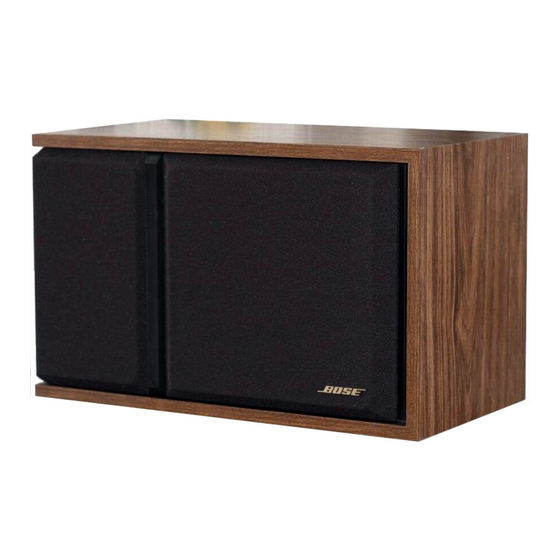Bose 301 Series III Service Manual - Page 2
Browse online or download pdf Service Manual for Speakers Bose 301 Series III. Bose 301 Series III 13 pages. Direct/reflecting
Also for Bose 301 Series III: Owner's Manual (10 pages)

®
BOSE
301 ™ SERIES III TECHNICAL DESCRIPTION
The BOSE 301 Series III System is an economical way to enjoy the legendary spatial
®
realism of a Direct/Reflecting
system. This system creates a natural balance of reflected
and direct sound that conventional speaker designs can't match. The result is lifelike
spaciousness that approaches the realism of a live performance. Even sound distribution
also enables the listener to sit or stand anywhere and still hear the same volume and blend
of musical instruments.
This achievement is also aided by three high performance drivers in each cabinet: one 8"
woofer and two 3" tweeters. The tweeters are arranged in a three-dimensional Free Space
®
Array which is mounted slightly away from the cabinet face. One tweeter is aimed inward
toward the center of the listening area. The second tweeter is aimed outward so that its
output is reflected off the side wall. This arrangement provides the excellent spatial
characteristics of a Direct/Reflecting
®
system.
The 301 system employs the BOSE Dual Frequency ™ crossover network. The crossover
provides a smooth transition from low to high frequencies by sending sound to all the
drivers over nearly a full octave. The result is a clear definition of each instrument and
voice.
Additionally, the system incorporates slot-port technology which reduces port noise and
produces cleaner, more natural bass. The sum of all these unique features makes the 301
Series III speaker capable of reproducing the wide dynamic range demanded by today's
advanced recordings without strain or loss of clarity.
TEST PROCEDURES
NOTE: Before performing any tests,remove the grille assembly. Refer to the Grille
Assembly Removal procedure.
1. Woofer Rub and Tick Test
A. Connect a sine wave oscillator to a power amplifier. Adjust the frequency of the oscillator
to 10 Hz and the amplifier output to 8 Vrms. Connect the amplifier output to the input
terminals of the 301-III speaker (see Figure 1). No extraneous noises such as rubbing,
scraping or ticking should be heard.
1
